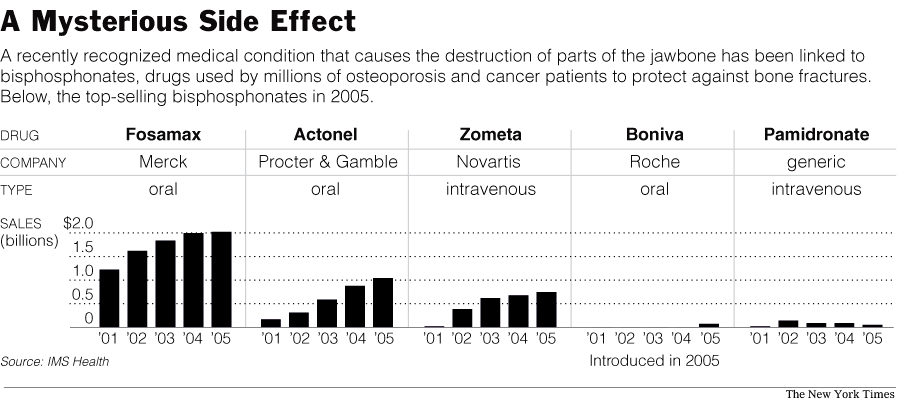Bisphosphonates long term use: Scientific studies.
Bisphosphonates long term use: Scientific studies, reports. There has been a growing concern that long term use of bisphosphonates (Fosamax, Boniva etc.) might lead to increase risk of fracture because these drugs slow the removal of 'old bone' that the body would normally discard.

The Journal of Bone Mineral Research published a study in 2016: "Managing Osteoporosis in Patients on Long-Term Bisphosphonate Treatment: Report of a Task Force of the American Society for Bone and Mineral Research" which offers guidance for how long Bisphosphonates should be used. Those taking a bisphosphonate drug may find the results of this study helpful.
The ABSTRACT of this study states: (Note: I have changed the paragraphing of the Abstract to make it easier to understand by those of us who are not research scientists.)
Bisphosphonates (BPs) are the most commonly used medications for osteoporosis. This ASBMR report provides guidance on BP therapy duration with a risk-benefit perspective.
Two trials provided evidence for long-term BP use.
1. In the Fracture Intervention Trial Long-term Extension (FLEX), postmenopausal women receiving alendronate for 10 years had fewer clinical vertebral fractures than those switched to placebo after 5 years.
2. In the HORIZON extension, women who received 6 annual infusions of zoledronic acid had fewer morphometric vertebral fractures compared with those switched to placebo after 3 years.
Low hip T-score, between –2 and –2.5 in FLEX and below –2.5 in HORIZON extension, predicted a beneficial response to continued therapy. Hence, the Task Force suggests that after 5 years of oral BP or 3 years of intravenous BP, reassessment of risk should be considered.
In women at high risk, for example, older women, those with a low hip T-score or high fracture risk score, those with previous major osteoporotic fracture, or who fracture on therapy, continuation of treatment for up to 10 years (oral) or 6 years (intravenous), with periodic evaluation, should be considered.
The risk of atypical femoral fracture, but not osteonecrosis of the jaw, clearly increases with BP therapy duration, but such rare events are outweighed by vertebral fracture risk reduction in high-risk patients. For women not at high fracture risk after 3 to 5 years of BP treatment, a drug holiday of 2 to 3 years can be considered.
The suggested approach for long-term BP use is based on limited evidence, only for vertebral fracture reduction, in mostly white postmenopausal women, and does not replace the need for clinical judgment. It may be applicable to men and patients with glucocorticoid-induced osteoporosis, with some adaptations. It is unlikely that future trials will provide data for formulating definitive recommendations." © 2015 American Society for Bone and Mineral Research.
Suggestion:
If you are having bisphosphonates long term use, I suggest that you discuss these studies with your physician - even if only for your peace of mind. It is difficult enough to deal with the fact that we have significant bone loss. We do not want to add worries about the side effects of medication prescribed to tread the condition. (Suggestion: print out the bisphosphonates long term use studies above so your health care provider has a copy when you speak with her/him.
In addition, I would like to suggest that ANY ONE taking prescription drugs for Osteopenia or Osteoporosis read and follow some of the suggestions about always bending from the hip, not the waist as well as tips for preventing falls. (If you do not 'bend from the waist' you are less likely to suffer a spinal fracture and if you do not fall, you are less likely to experience a wrist, arm or hip fracture.) Also do read the pages about exercises that can prevent falls and those than can build bone - especially if you are on bisphosphonates long term use. We need to help ourselves and not just depend on a pill to solve potential fracture issues.
Go to: Osteopenia, Osteoporosis drug treatments or click on: Osteopenia, Osteoporosis natural treatments

